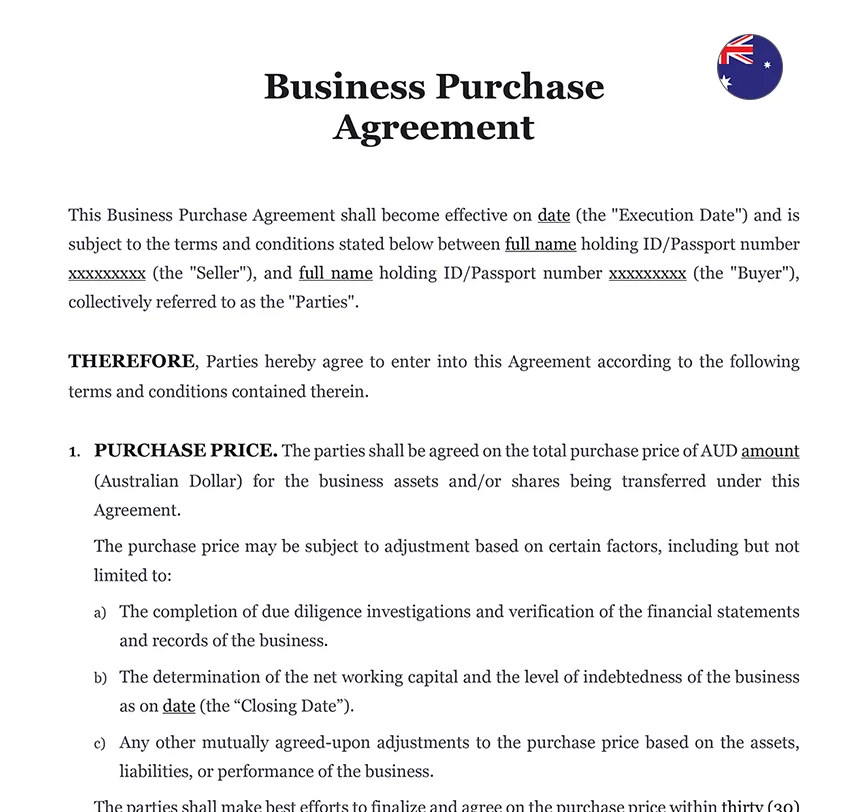Understanding the Company Purchase Contract
A Company Purchase Contract is a crucial document in any company acquisition. This legally binding contract outlines the terms and conditions under which the sale of the business will take place. Whether you’re acquiring a small business or a large corporation, the Company Purchase Contract is essential for protecting your interests and ensuring that the transaction is carried out smoothly.
The Company Purchase Contract details every aspect of the sale, including the purchase price, the assets being transferred, and any liabilities assumed by the buyer. Without this document, both parties are at risk of misunderstandings and potential legal disputes.
Conducting Due Diligence
Before signing a Company Purchase Contract, it’s critical to conduct thorough due diligence.
1. Financial Review: Assess the company’s financial statements, including profit and loss statements, balance sheets, and cash flow statements. This will help you understand the company’s financial health and identify any potential red flags.
2. Legal Review: Examine any existing contracts, leases, and licenses that the company holds. Ensure that these are transferable and that there are no outstanding legal issues that could affect the sale.
3. Operational Review: Evaluate the company’s operations, including its customer base, supplier relationships, and employee contracts. Understanding how the business operates on a day-to-day basis will give you a clearer picture of what you’re buying.
Conducting due diligence is a vital step in the acquisition process, as it helps you identify any potential risks associated with the purchase. For more on evaluating business transactions, our article on Key Considerations When Buying Company Shares provides insights into the due diligence process for share purchases.
Valuing the Business
Determining the fair value of the business is another important aspect of the acquisition process.
1. Asset-Based Valuation: Calculate the value of the company’s tangible and intangible assets, such as real estate, equipment, intellectual property, and goodwill.
2. Earnings-Based Valuation: Assess the company’s earning potential by analyzing its historical earnings and projecting future income. This method is particularly useful for businesses with strong, predictable cash flows.
3. Market-Based Valuation: Compare the company to similar businesses that have recently been sold to determine a fair market value.
Negotiating the Purchase Price and Terms
Once the business has been valued, the next step is to negotiate the purchase price and the terms of the Company Purchase Contract.
1. Purchase Price: The purchase price should reflect the value of the business as determined by your valuation. Be prepared to negotiate with the seller to reach a mutually agreeable price.
2. Payment Structure: Decide whether the purchase price will be paid in a lump sum or through installment payments. The payment structure can also include earn-outs or seller financing, depending on the needs of both parties.
3. Contingencies: Include contingencies in the agreement that must be satisfied before the sale can be completed. Common contingencies include securing financing, obtaining regulatory approvals, and completing due diligence.
Transferring Ownership and Assets
The transfer of ownership and assets is a key component of the Company Purchase Contract.
| ➤ Asset Transfer: The agreement should specify which assets are being transferred to the buyer, including inventory, equipment, intellectual property, and customer contracts. |
| ➤ Liability Assumption: Clarify whether the buyer will assume any of the company’s liabilities, such as debts, employee obligations, or pending lawsuits. |
| ➤ Title and Registration: Ensure that all titles and registrations for assets being transferred are properly documented and legally transferred to the buyer. |











